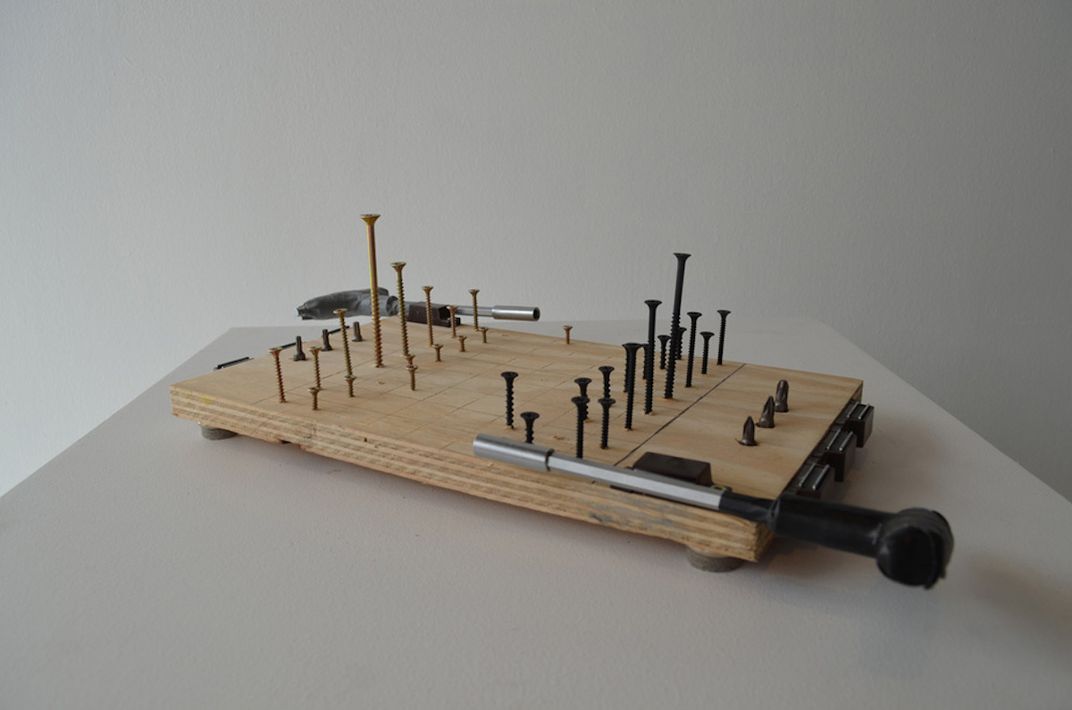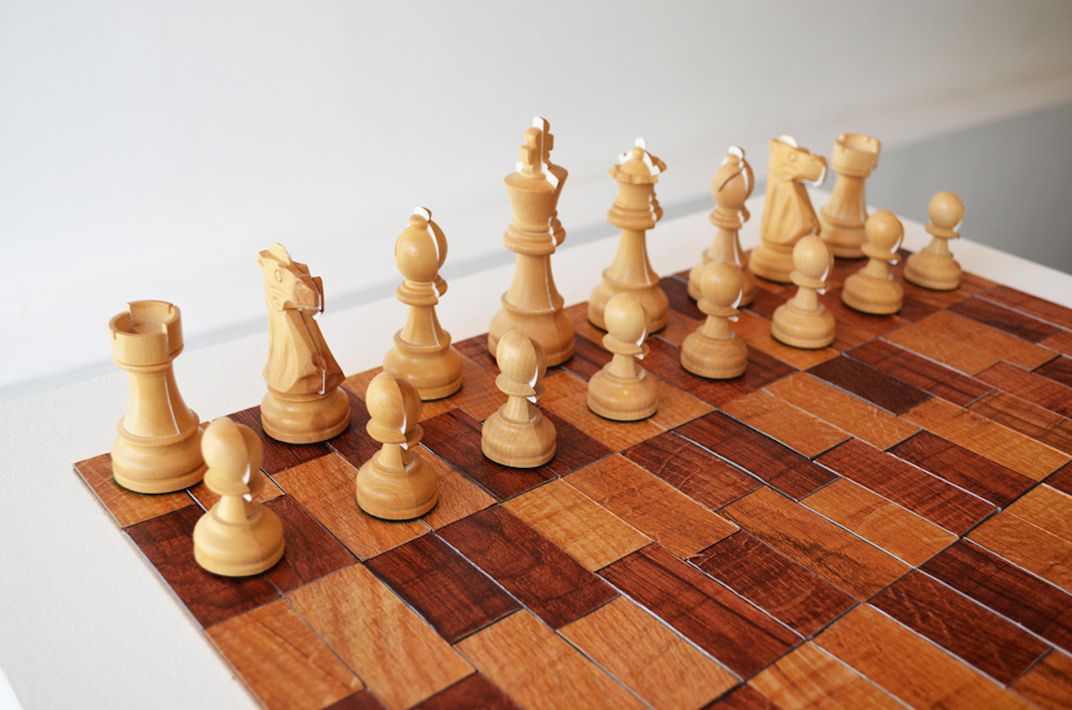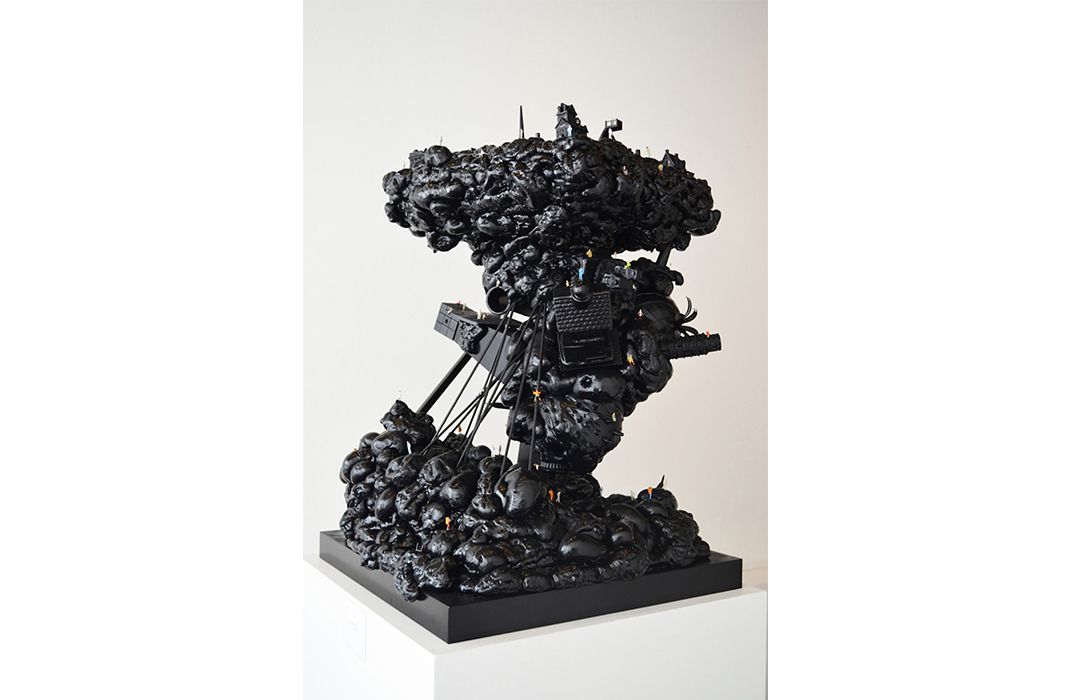Architects Give the Classic Chess Set a Radical Makeover
The designer behind the traditional kings and queens would resign if he saw these avant-garde game boards
Famed artist and noted chess lover Marcel Duchamp once said, "While all artists are not chess players, all chess players are artists." That may be true, but many fine artists, from Duchamp and his contemporaries to modern talents like Rachel Whiteread and Damien Hirst, still find themselves drawn to the game, inspired to create their own idiosyncratic chess sets. It's easy to understand why. With its symbolic pieces, romantic terminology, and nearly infinite possibilities, there's little about the game that isn't inspiring.
The design of the classic Staunton chess set, however, is most often attributed not to an artist, but to an architect, Nathaniel Cook, who looked to Neoclassical London to find inspiration for his pieces. The Staunton set defined the game we know today. Recently, a group of young architects were challenged to redefine the game, invited by Los Angeles gallery and storefront Jai & Jai to create and exhibit their own chess sets. First spotted over at Architizer, some of these sets go beyond designing pieces to redesign the timeless battle between light and dark - and a couple deconstructed it completely.
“The World is Flat” by Laurel Consuelo Broughton, for example, transformed the 64-square board into a globe to create a dynamic, edgeless game to wouldn't look out of place on Star Trek. For “In Turn,” Maxi Spina used modeling software to extrude the classic silhouette of the Staunton piece, transforming the game board into a field of unrecognizable forms that look like alien crustaceans or musical instruments, while Andrew Kovac's "Castle" scales up a single piece, reimagining the rook as something from a monstrous wonderland, a complete world unto itself. The concepts range from the poetic to the playful, from industrial to abstract, but they all have distinctly architectural qualities, whether its the creation of new space, a focus on material and proportion, or the model-like craft of each set. While none of them are likely to replace the Staunton anytime soon, these sets show how modern design, with all its irony, formal innovation, and technological sophistication, can still be connected to the traditions of the past while proposing bold new visions for the future.
The exhibition CHESS runs until April 19 at Jai & Jai in Los Angeles.
/https://tf-cmsv2-smithsonianmag-media.s3.amazonaws.com/accounts/headshot/Jimmy-Stamp-240.jpg)

/https://tf-cmsv2-smithsonianmag-media.s3.amazonaws.com/filer/59/e4/59e48a9f-e292-48d3-88c6-b40593b7d5e0/2-max-spina-chess-set.jpg)
/https://tf-cmsv2-smithsonianmag-media.s3.amazonaws.com/filer/ce/ce/cecee8e2-76a6-470c-a793-283dba722246/1-laurel-consuelo-broughton-chess.jpg)
/https://tf-cmsv2-smithsonianmag-media.s3.amazonaws.com/filer/6e/5c/6e5c3a51-49d7-42d8-b14d-22516e517783/5-erin-besler-andrew-nagata-chess.jpg)
/https://tf-cmsv2-smithsonianmag-media.s3.amazonaws.com/filer/67/5a/675af993-dc3a-4e2d-a24f-9e98af806ad2/6-jimenez-lai-chess-set.jpg)

/https://tf-cmsv2-smithsonianmag-media.s3.amazonaws.com/filer/5c/ae/5cae3c06-4d9b-464e-9c5b-e2aa9f86c219/8-ladg-chess.jpg)

/https://tf-cmsv2-smithsonianmag-media.s3.amazonaws.com/accounts/headshot/Jimmy-Stamp-240.jpg)